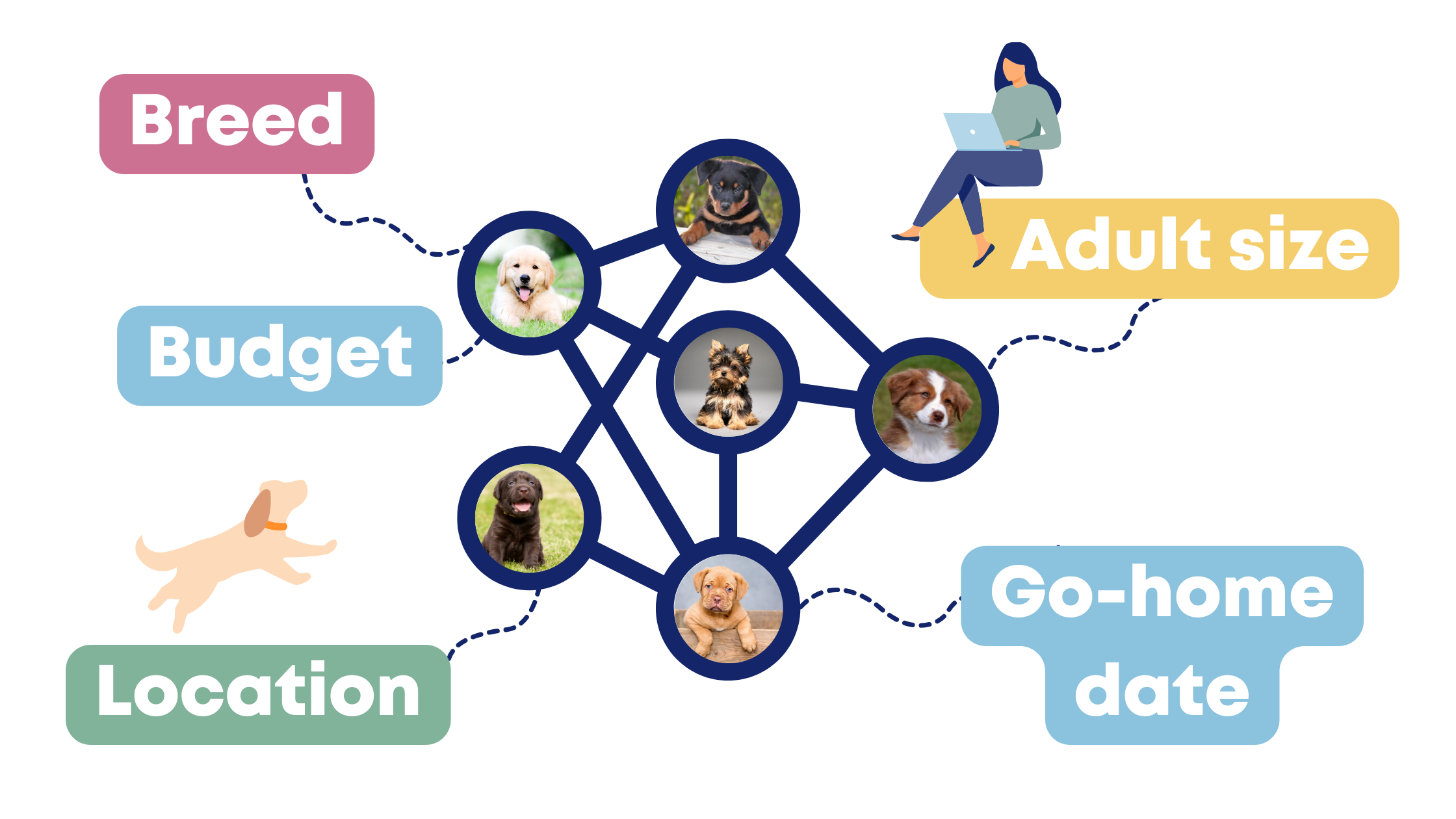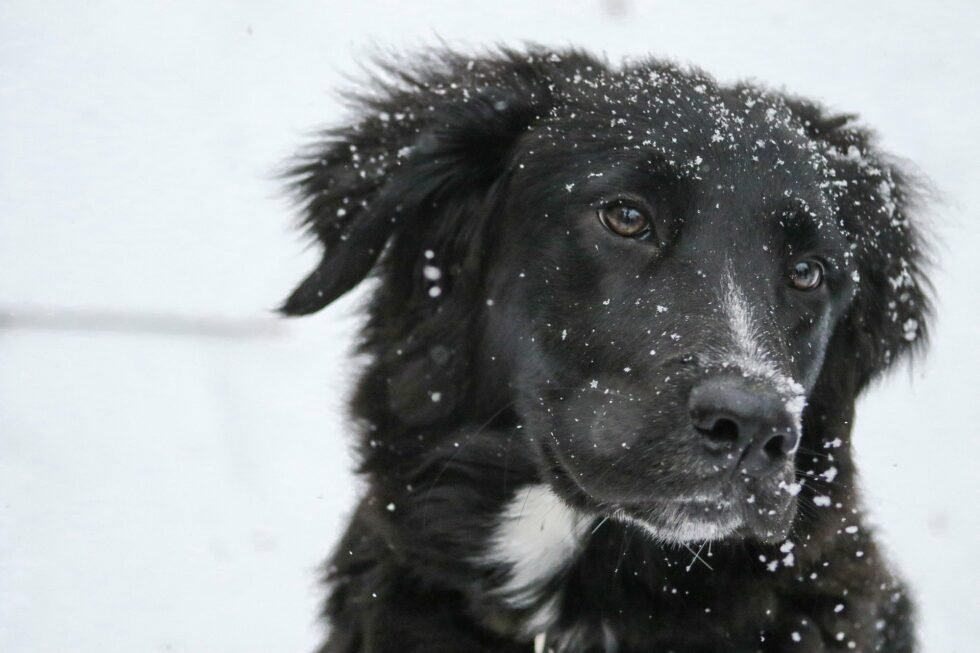Welcome to the
Learning Center
TellTail’s Learning Center contains valuable resources for both responsible dog breeders and curious pet buyers. Sniff around and discover something new!
Select a category or scroll down to browse all. Return to all articles

Featured Resources
Resources
TellTail Staff Favorites From Supplements to Toys
Discover TellTail staff's top picks for dog supplements, toys, and grooming products to support your pet's health and happiness. Shop our favorites for quality and durability.
Merle Genes in Dog Breeding
In dogs, "merle" is a pattern of coloring that can appear in the coats of certain breeds. The merle gene causes irregularly shaped patches of solid color to appear amidst a background of a different color. The patches can be any color, but are most commonly shades of blue or brown.
Is Tail Docking Ethical?
Tail docking is usually done when a pup is just days old, when tissue is still soft. Generally speaking, the procedure is quick, relatively painless, and does not affect the puppy’s overall health.
The Role of Genetic Testing in Dog Breeding
In recent years, advances in commercial genetic testing have made it possible to screen for a wide range of conditions that affect different breeds of dogs. Breed-specific panels can inform on the genetic concerns of a specific breed.
Hybrid Vigor in Dogs
Hybrid vigor is defined as the extent of improved performance of an individual trait in the first cross (F1) generation over the parent generation. This is usually expressed as percent improvement. For example, in poultry, an F1 generation might exhibit a 3-9% increase in egg production over the parent populations.
Sex-Specific Aging in Dogs?
This study investigates sex differences in longevity and causes of death in dogs taking into account the effect of neutering.
Relative Muzzle Length as a Factor for BOAS
The papers by Packer et al. (2015, just Packer from here on) and Liu et al (2017, just Liu from here on) on risk factors for BOAS are often pitted against each other when critics and supporters of extreme brachycephaly in dogs engage in discussion.
Conformational Risk Factors of BOAS in Three High-Risk Breeds
This study identifies breed-specific conformational risk factors for brachycephalic obstructive airway syndrome (BOAS) in three breeds with extreme brachycephaly: pugs, French bulldogs, and bulldogs.
Facial Conformation and Risk of BOAS
This two-part study investigates risk factors for brachycephalic obstructive airway syndrome (BOAS) by looking first across dogs of diverse breeds and conformations, and second, across brachycephalic dogs.
Why Large Dogs Die Young
Large dogs die younger than small ones. This well-known pattern poses a conundrum for evolutionary biologists. Across species, large mammals live longer than their small counterparts; for example, an elephant versus a mouse. In marked contrast, within species large size seems to carry costs in terms of an individual’s life span. The phenomenon has been documented in several species, but the negative relationship between size and lifespan is most evident in the domestic dog.
A new perspective on determining best age of spay or neuter
Desexing has both physical and behavioral implications. Spay/neuter timing needs to consider the both the physical and behavioral ramifications of allowing a dog to remain intact. I'll cover both here, and also present a risk analysis of physical issues associated with spay/neuter (S/N).
Factors Affecting Reproductive Performance
Researchers were interested in studying reproductive success in female dogs (bitches) after artificial insemination (AI). Artificial insemination refers to the deliberate introduction of semen into a female by a veterinarian. No natural breedings were included in this study.
Caloric requirement for pregnant and nursing dogs
A lot of breeders don’t understand the caloric requirements of a nursing mom. During the last trimester of pregnancy, her caloric needs are two to three times her normal caloric needs. During nursing her caloric needs can be as much as six times her normal caloric needs, depending on her litter size and metabolism. This will get a little math-y and just a little technical. I think it’s better if we can understand a little of the why before we learn the how.
The importance of a reproductive veterinarian and how to choose one
Breeding successfully requires several important partnerships, and our veterinary partners are critical. Most pet owners have a general practice vet they use, and may see a specialist such as an orthopedist or a cardiologist. For a breeder, one of your most important veterinary specialist partners is your reproductive vet.
What’s so important about dog DNA?
This blog post will cover why it's so important to purchase a puppy from a breeder who does DNA tests on their breeding stock and what to look for when provided a copy. We will cover in a future post why you might consider DNA testing your own dog, especially if you rescued, purchased from a puppy store, or bought a puppy without researching the breeder.
Common weaning mistakes
Weaning puppies successfully is as much art as it is science. Weaning is a critical time for puppies and impacts their survival, their physical development, their behavioral development, and their cognitive development. Here are a few common weaning mistakes I hope you avoid.
How often to breed and when to start breeding
Back in the day, best practice for breeding was to wait until a dog was at least 2 - 4 years old, had at least 3 heat cycles to breed, and also to skip at least 1 cycle between litters. Like many other things we used to do, when science is finally applied to our profession and we get information from good data, we realize that we could be doing better.
Effects of Diet Restriction on Lifespan
Obesity is the most common preventable disease in dogs in North America. Approximately 25 – 30% of the general dog population is obese and nearly 50% of dogs over the age of 5 are overweight.
Associations Between Sterilization Status and Lifespan & Cause of Death
Lifespan in the outcome of the differential risks of a myriad of possible causes of death. While life history theory suggests that reproduction carries a potential survival cost, we actually know little about how reproductive capability affects lifespan and the risk of dying of specific causes of death. Because elective sterilization (spay-neuter) surgery is commonly performed in pet dogs, they provide an excellent model to investigate this topic. The authors studied the effect of surgical sterilization on lifespan and cause of death in a large sample of domestic dogs. They controlled for age in their analyses, which is important, because a longer lifespan might lead to a higher risk of dying of diseases that strike at a later age.






















